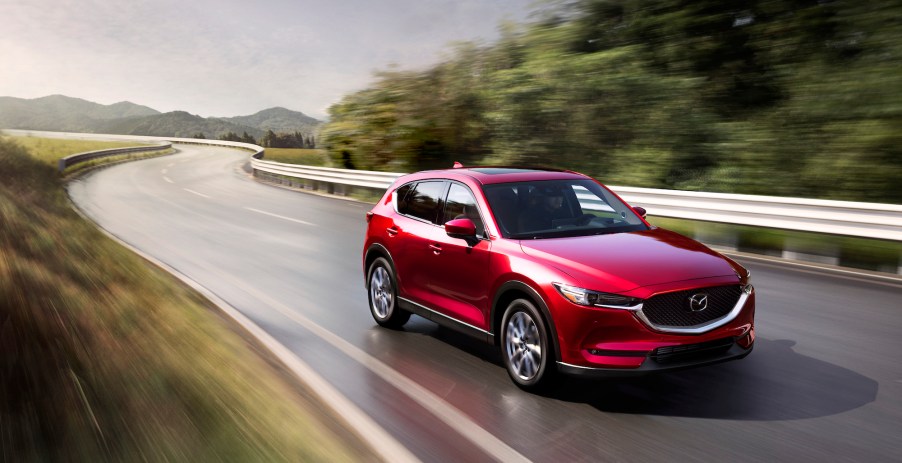
The Larger 2021 Mazda CX-5 Turbo Is More Fun to Drive Than the CX-30
The Mazda CX-5 isn’t the newest compact SUV, but it has proven its staying power. The automaker consistently changes this model based on customer feedback, including adding a stylish new interior with better insulation. For the 2019 model year, the Mazda CX-5 also got a new turbocharged engine.
The same engine lies under the hood of the Mazda CX-30, a smaller SUV in the subcompact category. Because both vehicles have the same turbocharged motor, does that mean they drive the same? According to MotorTrend, one Mazda SUV’s drive quality is much better than the other.
A closer look at the Mazda CX-5 Turbo and CX-30
Both vehicles offer relatively upscale interiors compared to the rest of the vehicles in their respective segments. The 2021 Mazda CX-5 provides a little less cargo space than expected, but it makes up for this with ample passenger room. Comfort options include heated seats for both the front and rear and a heated steering wheel.
For its ninth year of production, the Mazda CX-5 got a slew of technical upgrades. A ten-inch infotainment screen replaces the old monitor, and smartphone integration comes standard on all trims. There are still no touch controls, but MotorTrend says the dial is easy to use.
Two new safety features are also available for the new model year: reverse automatic emergency braking and driver attention monitors. The Mazda CX-5 already has plenty of standard features to instill confidence in drivers, including automatic emergency braking.
Despite being the newer model, the Mazda CX-30 is still stuck with the old nine-inch infotainment screen. However, it still comes with all the latest standard features, such as a Wi-Fi hotspot and smartphone integration. The CX-30 also offers the same great safety suite as the CX-5.
How does each SUV drive?
Each Mazda crossover offers a 2.5-liter turbo-four engine producing up to 250 hp and 320 lb-ft of torque. Both are paired with a six-speed automatic transmission and standard all-wheel drive.
Most MotorTrend editors weren’t fans of the Mazda CX-30 Turbo’s ride quality. It still has Mazda’s signature quick handling, and the steering wheel has a good weight. However, the torsion beam suspension feels too stiff over unsteady pavement, and the transmission often hunts for the correct gear.
The Mazda CX-5 Turbo also doesn’t have the smoothest suspension, but MotorTrend says it’s a fair trade-off for its performance. The CX-5 Turbo is far sportier, handling corners with grace despite being heavier. Editors also thought the steering was more balanced and natural than the CX-30’s.
The CX-5 Turbo also gets better acceleration than the CX-30. The CX-5 Turbo has a 0-to-60-mph time of 6.1 seconds, while the CX-30 Turbo’s split is 5.8 seconds, Car and Driver reports. MotorTrend measured the CX-5’s braking performance at 129 feet but speculated it might be better with different tires.
Which Mazda SUV is better?
While both vehicles have their pros and cons, it’s clear the Mazda CX-5 boasts more refined driving manners. Some drivers might also not be too thrilled to see the outrageous price hike over the standard CX-30.
One thing MotorTrend determined about both models is that the six-speed automatic transmission is a detriment to performance. It feels archaic compared with rivals equipped with eight-speed automatic transmissions and dual-clutch options. Recalibrating the overbearing stability control would also help unlock the Mazda CX-5 Turbo’s true potential.



